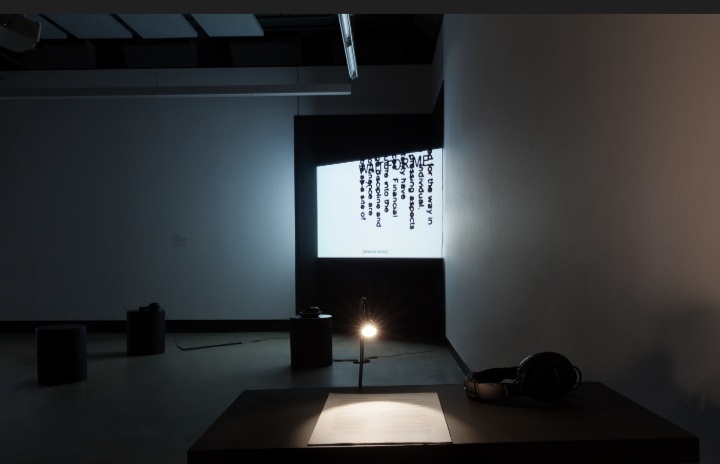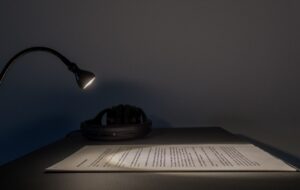The duo exhibition plays with the audience’s perceptions to reflect on the place of disability in the arts
Artists Amalle Dublon and Constantina Zavitsanos come together in Dazibao art gallery’s current exhibition, Flux Incapacitor. The show features collaborative works as well as individual creations from both artists.
Emma-Kate Guimond, coordinator of exhibitions and special projects for Dazibao, described the show’s main theme as “the creation of abundance.” This idea relates to notions of dependency and debt explored in the exhibition, which the artists link with the reality of individuals living with disabilities.
Guimond explained that the gallery was first interested in Dublon and Zavitsanos’ collaborative work titled April 4, 1980. The audio-visual creation is presented on a screen at the entrance of the gallery. When putting headphones on, viewers hear a robotic voice. Because the voice is garbled and difficult to understand, the captions projected on the screen become essential in their understanding of the work.
The dependence on the words being displayed on the screen emulates the reality of individuals who struggle with hearing disabilities, allowing visitors to experience to a degree what these individuals go through. The artists also play with the idea and necessity of captions “Captions are broadly considered an obligatory add-on or even an aesthetic annoyance,” reads the description of the work.
All the time, created by Zavitsanos, also plays with words on screens. The work engages with the physical presence of users. On the bottom of a large screen, two texts are projected simultaneously. When seen together, they are hard to distinguish. But when visitors approach the screen, the system adapts the projection so that only one layer of text appears, making it readable. Guimond related this work about holograms to the larger theme of the exhibition, explaining that, “when you split a hologram, you’re not creating two halves, you’re actually doubling. So by taking away, you’re making more.”
“This relates to people with different abilities, whose lives depend on more care or different devices..[…] So this is where the theory of debt comes in: it’s not by needing more care [that] you create a debt, by needing more care you’re generating care,” added Guimond.
Placed at the end of the gallery, Zavitsanos’ Girl there’s a better life is another screen projection. The video features two texts overlayed on top of each other. New symbols compose the resulting image, creating a hypnotizing experience. During the projection, the images evolve, becoming out of focus at times, with a blue background suddenly appearing behind the transformed words. Headphones made available to visitors play cheerful songs during the video. The marriage of a familiar music beat with intriguing visuals creates a new language that misleads the viewer’s senses and offers a unique experience.
A piece created exclusively for the exhibition, Known Donor Agreement by Dublon and Jordan Lord, is a revisited version of a sperm donation contract. Visitors can read the contract on paper and listen to it through headphones. The work explores notions of mutual consent and care through reflections on friendship, connection, and parenthood. The sensitivity and openness transmitted through the work adds to the reflections enabled by the other artworks in the space.
Guimond described Dazibao’s mission as “to disseminate and present contemporary image-based practices that deal with issues of social importance.” For her, Flux Incapacitor totally fits into this mission, as it delves into reflections about disabilities and their representation in the arts.
Dublon and Zavitsanos’ innovative approach to the themes of abundance and debt shed light on the necessary theme of inclusion and accessibility. The gallery’s website features La Viewing Room, a page presenting the texts from the exhibition as well as background information about the artists’ past works and studies. This initiative allows the public to deepen their knowledge of the context behind the art pieces.
Flux Incapacitor is presented at Dazibao art gallery, located at 5455 de Gaspé Ave., until April 2.
Visuals courtesy Marilou Crispin





